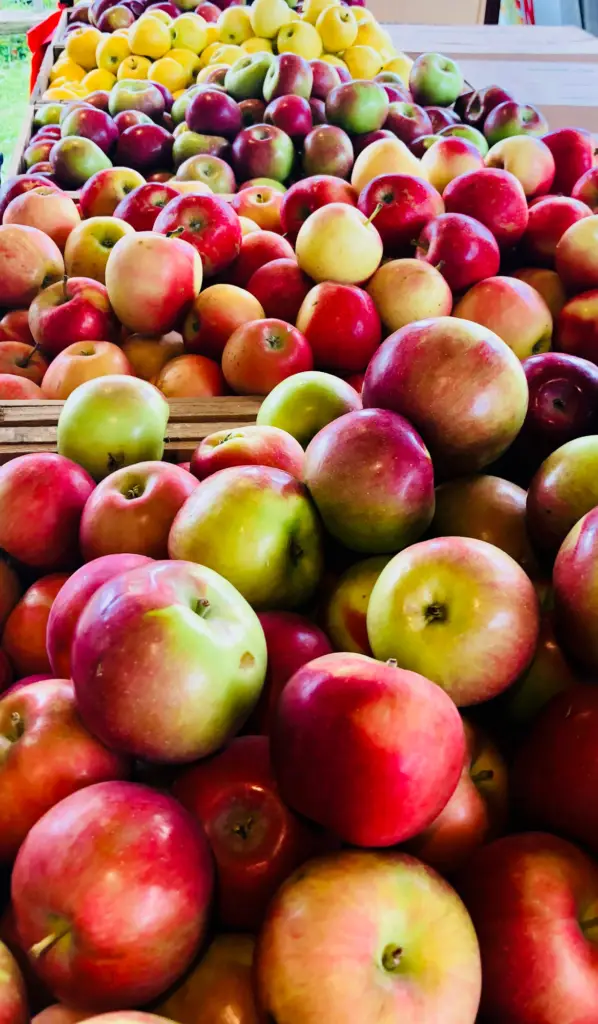Apples are a popular fruit known for their crisp texture and sweet-tart flavour. While traditionally grown outdoors, advancements in agricultural technology now allow for the cultivation of apples indoors. This innovation opens up new possibilities for apple farming, including year-round production and control over growing conditions. To maximise the benefits of indoor apple cultivation, it is crucial to understand the proper techniques for storing these apples. In this article, we will explore effective methods to store indoor-grown apples, ensuring their freshness, flavour, and nutritional value are preserved for extended periods.


Table of Contents
Harvesting at the Right
The timing of apple harvesting significantly influences their storage potential. Indoor-grown apples should be harvested when they have reached their optimal stage of ripeness. This typically occurs when the fruits have developed their full colour, their flesh is firm, and their flavor is well-balanced. Harvesting too early can result in immature apples that won’t store well, while overripe fruits may spoil quickly.
Preparing Apples for Storage
Before storing indoor-grown apples, it is essential to properly prepare them. Start by gently wiping the apples with a soft cloth to remove any dust or residue. Inspect each apple for bruises or cuts, as damaged fruit is more prone to rot. Remove any damaged apples from the batch to prevent spoilage from spreading.
Temperature and Humidity Control
Maintaining the correct temperature and humidity is crucial for storing indoor-grown apples. The ideal storage temperature for apples is around 32 to 40°F (0 to 4°C), which slows down the ripening process. A cool, dark place such as a basement or a refrigerator is suitable for long-term apple storage.
Humidity also plays a vital role in apple storage. Apples prefer a moderately humid environment, with humidity levels ranging from 90 to 95%. To achieve the desired humidity, consider using a humidifier or placing a bowl of water near the apples. However, be cautious not to make the environment excessively humid, as it can promote mold growth and cause the apples to rot.
Proper Packaging
Packaging apples correctly is essential to prevent bruising and protect them from moisture loss. Individual wrapping in paper or tissue can help maintain the apples’ moisture content and prevent direct contact between them. Alternatively, storing apples in perforated plastic bags can help maintain humidity while allowing for airflow. Avoid using airtight containers, as they can lead to excessive moisture accumulation and accelerate spoilage.
Regular Inspection and Rotation
Regularly inspecting stored apples is crucial to identify any signs of spoilage or decay. Even with the most optimal storage conditions, some apples may still develop soft spots or begin to rot. Remove any damaged apples promptly to prevent the spread of decay to the remaining fruits.
Additionally, periodically rotate the stored apples to ensure even air circulation and prevent pressure points. Apples in contact with each other can cause bruising or accelerate ripening. Gently moving them around every few weeks helps maintain their overall freshness and quality.
Conclusion
With advancements in indoor farming techniques, growing apples indoors has become a viable option, allowing for year-round production and control over growing conditions. Proper storage techniques are essential to preserve the freshness, flavour, and nutritional value of indoor-grown apples. Harvesting at the right time, preparing the fruits, controlling temperature and humidity, using appropriate packaging, and regularly inspecting and rotating the apples are key steps to ensure their long-term storage success. By following these guidelines, you can enjoy the taste of freshly harvested apples from your indoor garden throughout the year.
